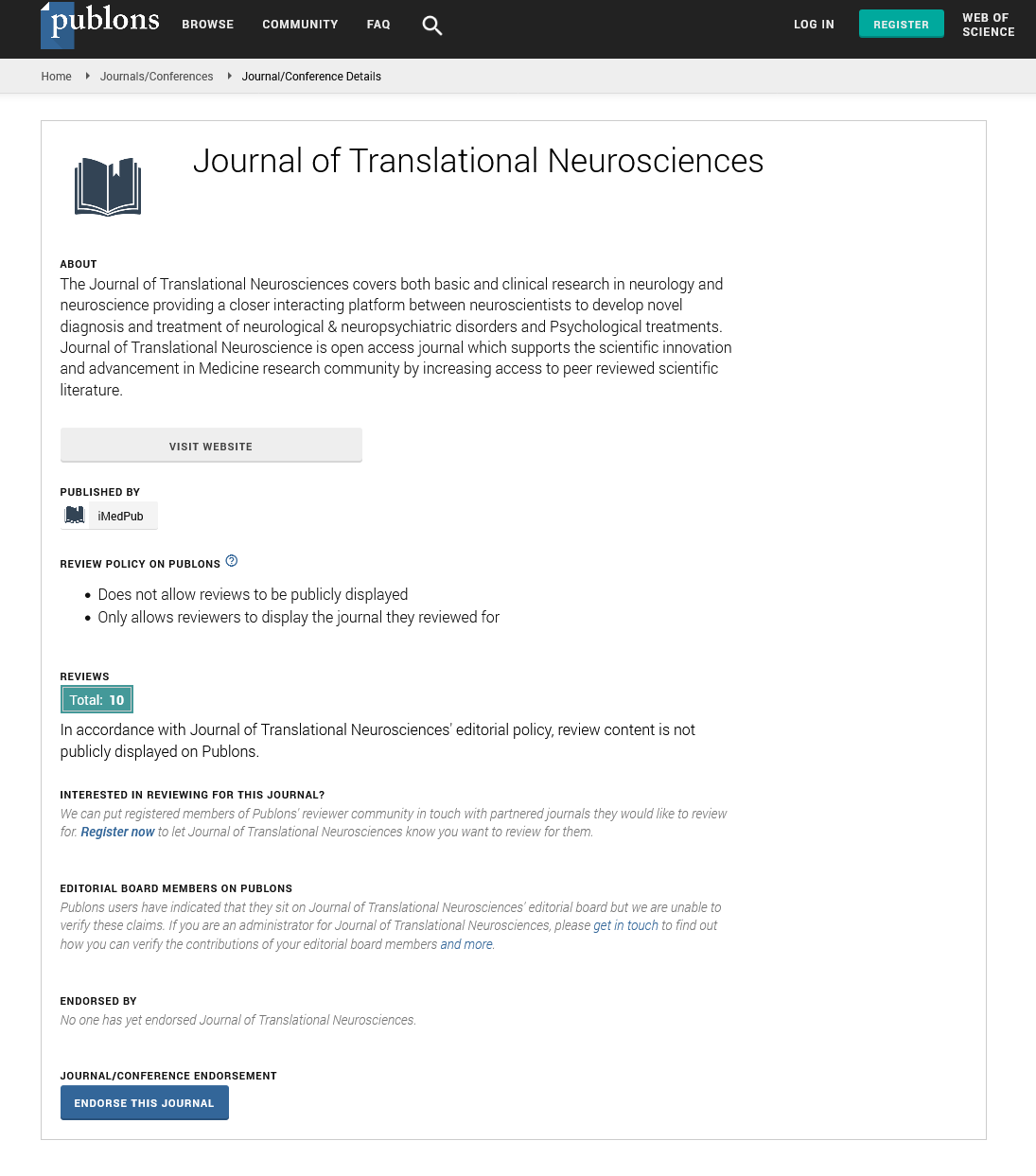Abstract
Neuroinflammation and AlzheimerâÃâ¬Ãâ¢s Dementia
Amyloid beta clusters have been found to accumulate faster in the presence of cholesterol in brain cell membranes. L5, the most negatively charged LDL, is the most potent in inducing endothelial cell reactive oxygen species (ROS) and apoptosis. TNF-α and PGE2 levels significantly increased in the microglia treated with metVLDL, indicated through microglia activation and neuroinflammation. In C57BL/6 mice, repeated injections of metVLDL, containing more V5 elicited an early decline in cognitive functions. The AD patients with higher L5 % (L5>=1.5%) have worse baseline cognitive functions including MMSE and CASI and global severity of dementia (CDR-SB) as well as more rapid deterioration of cognition. Our findings highlighted the importance of the novel approach to Alzheimer’s disease from electronegative lipoproteins. The shift from normal glucose (NG; 5.5 mM) to high glucose (HG; 25 mM) promoted cell growth and induced oxidative/inflammatory stress and microglial activation, as evidenced by increased MTT reduction, elevated pro-inflammatory factor secretion, and upregulated expression ofstress/inflammatory proteins, which led to apoptosis and autophagy. LPS-induced inflammation was enlarged by an NG-toHG shift. Acute glucose fluctuation forms the stress that altered microglial activity, representing a novel pathogenic mechanism for the continued deterioration of neurological function in diabetic patients. REST (RE1-silencing transcription factor) gene has been shown to be lost in Alzheimer’s disease (AD). The allele frequency of rs3796529-T wassignificantly lower in the AD cohort compared to the general population cohort (36.82% vs. 40.73%, p=0.029). The AD patients carrying the rs3796529 T/T genotype had a longer progression-free survival than those with the C/C genotype (p=0.012). In multivariate analysis, the rs3796529 T/T genotype (adjusted HR=0.593, 95% CI: 0.401-0.877, p=0.009) was an independent protective factor for functional deterioration. Our findingssuggested that neuro-inflammation could be an important pathogenesis for AD and anti-inflammatory agentsshould also be considered in the therapy for AD
Author(s):
Ching-Kuan Liu, Chou MC, Huang P, Chen SL, Chen HY and Chen CH
Abstract | PDF
Share this

Google scholar citation report
Citations : 46
Journal of Translational Neurosciences received 46 citations as per google scholar report
Journal of Translational Neurosciences peer review process verified at publons
Abstracted/Indexed in
- Google Scholar
- JournalTOCs
- China National Knowledge Infrastructure (CNKI)
- Publons
- Secret Search Engine Labs
- Euro Pub
Open Access Journals
- Aquaculture & Veterinary Science
- Chemistry & Chemical Sciences
- Clinical Sciences
- Engineering
- General Science
- Genetics & Molecular Biology
- Health Care & Nursing
- Immunology & Microbiology
- Materials Science
- Mathematics & Physics
- Medical Sciences
- Neurology & Psychiatry
- Oncology & Cancer Science
- Pharmaceutical Sciences


